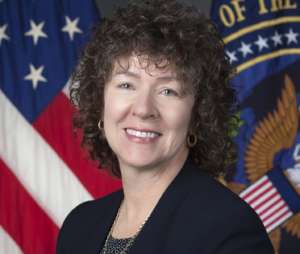 Exclusive
Exclusive  Exclusive
Exclusive IARPA's chief of technology transition described challenges to going from legacy systems to cloud infrastructure. Agencies are trying to reduce their infrastruc...
Agencies are trying to reduce their footprint with infrastructure that is more flexible, scalable and efficient than siloed legacy systems. Integrated and converged systems can do this but one Intelligence Community IT official sees a misunderstanding between tech savvy types and support systems.

Marianne Kramer, chief of Technology Transition at the Intelligence Advanced Research Projects Activity (IARPA), said reconfiguring data centers requires substantial planning and sufficient lead time.
“The challenge for IARPA, or for any R&D organization, is to really convince our IC partners that results from our R&D initiative can successfully transition to their organizations with minimal disruption,” she said during a “Finding Efficiencies with Integrated and Converged Systems” webcast at Federal Computer Week on Tuesday. “So the last thing they wanted was R&D code on top of everything else. Perception in this case was a real challenge for R&D. That’s what we ended up doing.”
One barrier to convincing other IC agencies included a separation between development and operations environments. Processes tend to lean away from perceived risk, and the changes needed to accept new cloud capability would have been costly and disruptive to maintenance schedules, Kramer said. She also recommended that anything companies can do to assure those whose are risk avoidant will make the process go faster.
“I still run across these situations where I’m using test environments to run research results that are being used operationally,” she said. “I mean, that’s a hot mess.”
A cultural as well as technical disconnect persists when it comes to transitioning to cloud technologies, she said.
“Security becomes a barrier to accepting new technology because individuals with accrediting systems, they have certain expectations and modern virtual systems can satisfy a lot of these steps automatically, and it sort of obviates the need for dozens of steps in part of their role,” she said.
Even though early direction from the Office of Management and Budget to replace physical data centers with virtual ones was clear, the push to the cloud took time for individual agencies. Kramer said this was due to the way federal agencies approve contracts and are funded.
The first step to cloud transition should be getting funding in place, she said. Then an agency should decide which systems actually make sense to put into the cloud — because not all will. She suggested it is up to the government to determine which services work better in the new technology. Learning and modernizing at the same time gets expensive and produces mixed results.
Kramer offered solutions to improve R&D transition such as virtual solutions for customers to evaluate the impact. Offering research results as a subscription service, even in a specific area such as machine learning, was one idea.
“Naturally, the more variables an organization can control the easier their modernization path,” she said. “What that means for R&D and what I’m trying to do, it was often met with resistance.”
Copyright © 2024 Federal News Network. All rights reserved. This website is not intended for users located within the European Economic Area.
Amelia Brust is a digital editor at Federal News Network.
Follow @abrustWFED
 Exclusive
Exclusive 